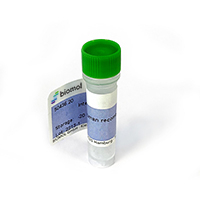Cookie preferences
This website uses cookies, which are necessary for the technical operation of the website and are always set. Other cookies, which increase the comfort when using this website, are used for direct advertising or to facilitate interaction with other websites and social networks, are only set with your consent.
Configuration
Technically required
These cookies are necessary for the basic functions of the shop.
"Allow all cookies" cookie
"Decline all cookies" cookie
CSRF token
Cookie preferences
Currency change
Customer-specific caching
FACT-Finder tracking
Individual prices
Selected shop
Session
Comfort functions
These cookies are used to make the shopping experience even more appealing, for example for the recognition of the visitor.
Note
Show the facebook fanpage in the right blod sidebar
Statistics & Tracking
Affiliate program
Conversion and usertracking via Google Tag Manager
Track device being used

| Item number | Size | Datasheet | Manual | SDS | Delivery time | Quantity | Price |
|---|---|---|---|---|---|---|---|
| R1585E.5 | 5 µg | - | - |
3 - 19 business days* |
626.00€
|
If you have any questions, please use our Contact Form.
You can also order by e-mail: info@biomol.com
Larger quantity required? Request bulk
You can also order by e-mail: info@biomol.com
Larger quantity required? Request bulk
Resistin (resistanceto insulin), also known as adipocytespecific secretory factor (ADSF)... more
Product information "Resistin, Recombinant, Human (RETN, RETN1, RSTN, Adipose Tissue-specific Secretory Factor, ADSF, C/E"
Resistin (resistanceto insulin), also known as adipocytespecific secretory factor (ADSF) and, found in inflammatory zone 3 (FIZZ3), is a 10kD member of a small family of secreted cysteinerich peptide hormones. These molecules purportedly play some role in inflammation, glucose metabolism, and angiogenesis (1, 2, 3, 4). Human Resistin precursor is 108 amino acids (aa) in length. It contains an 18 aa signal sequence plus a 90 aa mature region. The mature region shows an Nterminal ahelical tail (aa 23 44) and a Cterminal Bsheet globular head (aa 47 108) (5 7). The Resistin molecule circulates as either a noncovalent trimer (minor form), or a disulfidelinked homohexamer (major form). Noncovalent trimers are generated when the ahelical segments selfassociate to form a threestranded coiledcoil structure. Covalent hexamers subsequently appear when the free Cys at position #26 is engaged by adjacent trimers. It is hypothesized that the hexamer is the inactive form of the molecule, and bioactivity is achieved at the target site by disulfide bond reduction (5). Although Resistin family molecules can noncovalently interact to form heterotrimers in vitro, there is no evidence to suggest this occurs in vivo with Resistin (8, 9). Mature human Resistin shares 56% and 54% aa identity with mouse and rat Resistin, respectively. Rat Resistin possesses an alternate start site at Met48? this Met is not found in the mouse molecule, however (10). Rodent Resistin is expressed by white adipocytes, splenocytes, astrocytes, and anterior pituitary epithelium (6, 11, 12). Although the function of Resistin is unclear, it would seem to block insulinstimulated uptake of glucose by adipocytes and promote glucose release by hepatocytes (6, 13, 14). As such, it has been proposed to participate in dietinduced insulinsensitivity. Diets high in fat promote an increase in overall adipocyte size. Hypertrophic adipocytes are known to secrete TNFa which acts locally to block ACRP30 production. Since ACRP30 is an insulinsensitizer, a drop in ACRP30 availability leads to insulininsensitivity, which drives increased insulin production (a compensatory mechanism). High insulin induces Resistin secretion which now antagonizes insulin action, prompting more insulin production and more Resistin secretion (15). Source: Recombinant corresponding to Ser17Pro108 from human Resistin expressed in E. coli. Molecular Weight: ~9.7kD, Endotoxin Level: <1EU/ug (LAL method), Storage and Stability: Lyophilized powder may be stored at -20°C. Stable for 12 months at -20°C. Reconstitute with acetic acid. Aliquot to avoid repeated freezing and thawing. Store at -20°C. Reconstituted product is stable for 6 months at -20°C. For maximum recovery of product, centrifuge the original vial after thawing and prior to removing the cap. Further dilutions can be made in assay buffer.
| Keywords: | Cysteine-rich secreted protein FIZZ3, Adipose tissue-specific secretory factor, Cysteine-rich secreted protein A12-alpha-like 2, C/EBP-epsilon-regulated myeloid-specific secreted cysteine-rich protein |
| Supplier: | United States Biological |
| Supplier-Nr: | R1585E |
Properties
| Conjugate: | No |
| Format: | Purified |
Database Information
| KEGG ID : | K13438 | Matching products |
| UniProt ID : | Q9HD89 | Matching products |
| Gene ID : | GeneID 56729 | Matching products |
Handling & Safety
| Storage: | -20°C |
| Shipping: | +4°C (International: +4°C) |
Caution
Our products are for laboratory research use only: Not for administration to humans!
Our products are for laboratory research use only: Not for administration to humans!
Information about the product reference will follow.
more
You will get a certificate here
Viewed



